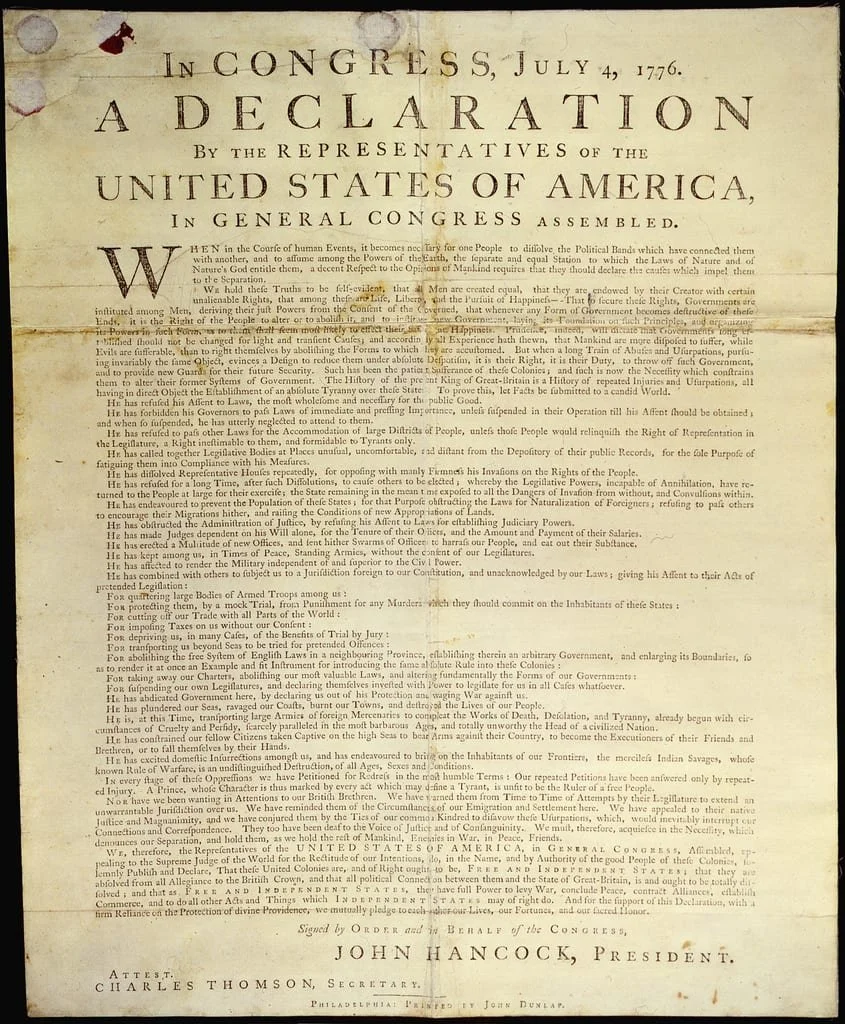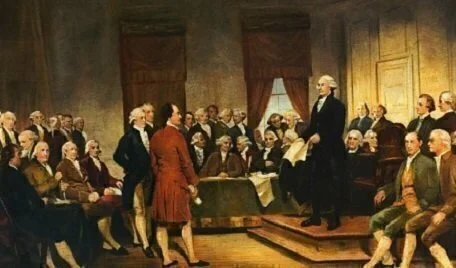United States Foundational Documents
Introduction
The United States government was not created overnight. It evolved through a series of events, debates, and documents that shaped the nation's political structure. Many of these developments were influenced by Enlightenment thinkers, including John Locke, Montesquieu, and Voltaire. To understand the foundations of American government, we must first examine the tensions between the American colonies and Britain, the creation of the Declaration of Independence, the weaknesses of the Articles of Confederation, and the eventual drafting of the U.S. Constitution.
Colonial Tensions and the Road to Independence
By the mid-1700s, the British government was deeply in debt following the French and Indian War (1754–1763). To recover financially, Britain imposed taxes on the American colonies, such as the Sugar Act (1764) and the Townshend Acts (1767), without granting the colonists representation in Parliament. This led to widespread resentment and protests, with the rallying cry of “No taxation without representation.”
In response to increasing resistance, Britain enacted the Intolerable Acts (1774), which punished the colonies—especially Massachusetts—by closing Boston’s port, restricting colonial government meetings, and allowing British soldiers to be housed in colonists’ homes. These policies fueled growing unrest, ultimately leading to the outbreak of the American Revolution in 1775.
The Declaration of Independence (1776)
With tensions escalating, colonial leaders convened the Second Continental Congress (1775) to discuss their next steps. Though some hoped for reconciliation, the failure of petitions to the British Crown led to a decision to formally break away. In 1776, Thomas Jefferson drafted the Declaration of Independence, a document heavily influenced by John Locke’s ideas on natural rights and the social contract.
The Declaration listed 27 grievances against King George III, arguing that he had violated the colonists’ rights. Among these were taxation without consent, quartering of soldiers, and obstruction of colonial governance. The document asserted that all men are born with unalienable rights to “life, liberty, and the pursuit of happiness” and that government exists to protect these rights. When a government fails to do so, the people have the right to alter or abolish it.
1) What were some of the major grievances* listed in the Declaration of Independence? How did they connect to Enlightenment ideas?
Grievances* = formal issues or complaints.
Shays’ Rebellion of 1786 made highlighted the problems of not having a national military to deal with internal threats. A major reason why the United States decided to ditch the Articles of Confederation.
The Articles of Confederation (1781–1789)
After independence was declared, the United States needed a system of government. The Articles of Confederation, drafted in 1777 and ratified in 1781, created a weak national government that gave most powers to the states. The Articles reflected the colonists’ fear of a strong central government, instead forming a “league of friendship” between the states.
Under the Articles, Congress could declare war, conduct diplomacy, and manage western lands but lacked the power to tax, regulate trade, or enforce laws. Each state retained sovereignty, had its own currency, and was responsible for raising its own militia. Laws required the approval of 9 out of 13 states, making it difficult to pass legislation.
Problems with the Articles of Confederation
While the Articles provided a basic framework for government, they had significant weaknesses:
No power to tax: The national government depended on states for funding, often leaving it financially crippled.
No standing military: Without a national army, the government struggled to respond to threats, such as Shays’ Rebellion (1786–1787), an uprising of farmers protesting high taxes and debt.
Difficult lawmaking process: Passing laws and amendments was nearly impossible since it required broad agreement among states.
The inability to address these issues convinced many leaders that a stronger national government was necessary.
2) Why did the Articles of Confederation create a weak national government? What were its major flaws?
The Constitutional Convention (1787)
Initially convened to revise the Articles, the Constitutional Convention in 1787 quickly turned into a debate over creating a new government entirely. Leaders like James Madison and Alexander Hamilton argued for a stronger federal government, while others, like Patrick Henry and Thomas Jefferson, feared it would become too powerful.
Two main factions emerged:
Federalists, who supported a strong central government (e.g., Madison, Hamilton).
Anti-Federalists, who wanted to protect states’ rights (e.g., Jefferson, Henry).
The resulting U.S. Constitution established a government based on federalism, balancing power between national and state governments. It replaced the weak confederation with a system that included three branches of government:
Legislative (Congress) – Makes laws
Executive (President) – Enforces laws
Judicial (Supreme Court) – Interprets laws
To gain support, The Bill of Rights (next Lesson) was later added to guarantee individual freedoms.
3) What were the major differences between the Federalists and Anti-Federalists?
4) Montesquieu believed in the separation of powers. How is this concept reflected in the U.S. Constitution?
Conclusion
The transition from British rule to the U.S. Constitution was a complex process shaped by Enlightenment ideas, revolutionary struggles, and debates over governance. As the United States moved from the Articles of Confederation to a new Constitution, the Founders worked to balance power and protect citizens’ rights. This system remains the foundation of American democracy today.




